Influence of an Engineered Notch on the Electromagnetic Radiation Performance of NiTi Shape Memory Alloy
Abstract
:1. Introduction
2. Materials and Methods
2.1. Instrumentation
2.2. Assessment of Mechanical and EMR Parameters
3. Results and Discussion
3.1. Influence of 2a/w on EMR Signal Characteristics
3.1.1. Variation in EMR Parameters with Tensile Strain at Fracture Load
3.1.2. Correlation between Plastic Zone Radius and EMR Parameters
3.1.3. The Interrelation between the Energy Releases of the Mechanical and EMR Parameters
4. Microstructural Analysis
5. Conclusions
- The EMR amplitude value rose linearly with increasing plastic zone radius, suggesting that pinning barriers become more prevalent once the plastic zone size reaches a certain threshold. New Frank–Read sources permit dislocation multiplication during strain hardening, rising with the plastic zone radius, increasing the maximum EMR amplitude and the average EMR energy release rate. Investigating the relation between EMR parameters and the plastic zone radius provides vital information for monitoring crack growth in materials and alloys at the microstructural level.
- The nature of the EMR emission signals near the yield and at fracture was observed to have oscillatory and exponential characteristics. With increased strain hardening, the viscous damping coefficient of the alloy rises, causing the signals to become exponential at a higher load value.
- The viscous damping coefficient and the edge dislocation length are variable parameters during loading due to probable dissociation during dislocation generation and multiplication. Hence, an analysis of the nature of EMR amplitude could facilitate comprehending the plastic deformation process at the atomic level with complementary molecular dynamics studies.
- A direct correlation was observed between the EMR energy release rate (Gem) and the elastic strain energy release rate (G). By examining the EMR emitted upon fracture, the smooth relationship between Gem and G was inferred as a novel method to evaluate the fracture toughness of metallic materials.
Author Contributions
Funding
Institutional Review Board Statement
Informed Consent Statement
Data Availability Statement
Conflicts of Interest
Nomenclature
| EMR | Electromagnetic Radiation |
| FESEM | Field Emission Scanning Electron Microscopy |
| IRC | Intelligent Reinforced Concrete |
| Niti | Nitinol |
| SEM | Scanning Electron Microscope |
| SMA | Shape Memory Alloy |
| WEDM | Wire Electrical Discharge Machine |
References
- Wang, R.; Cheng, H.; Li, J. Stress strain analysis of notched specimen based on material property gradient. Procedia Eng. 2012, 31, 360–365. [Google Scholar] [CrossRef]
- Afkhami, S.; Lipiäinen, K.; Javaheri, V.; Amraei, M.; Salminen, A.; Björk, T. Effects of notch-load-defect interactions on the local stress-strain fields and strain hardening of additively manufactured 18Ni300 steel. Mater. Sci. Eng. A 2023, 876, 145165. [Google Scholar] [CrossRef]
- Qu, R.; Zhang, P.; Zhang, Z. Notch effect of materials: Strengthening or weakening? J. Mater. Sci. Technol. 2014, 30, 599–608. [Google Scholar] [CrossRef]
- Misra, A. Electromagnetic effects at metallic fracture. Nature 1975, 254, 133–134. [Google Scholar] [CrossRef]
- Misra, A. Ninth Yearbook to the Encyclopedia of Science and Technology; Edizoni Scientifiche e Tecniche; Mondadori: Milan, Italy, 1975. [Google Scholar]
- Misra, A. A physical model for the stress-induced electromagnetic effect in metals. Appl. Phys. 1978, 16, 195–199. [Google Scholar] [CrossRef]
- Tudik, A.A. Electromagnetic emission during the fracture of metals. Sov. Tech. Phys. Lett. 1980, 6, 37–38. [Google Scholar]
- Jagasivamani, V.; Iyer, K.J.L. Electromagnetic emission during the fracture of heat-treated steel. Mater. Lett. 1988, 6, 418–422. [Google Scholar] [CrossRef]
- Dickinson, J.T.; Jensen, L.C.; Bhattacharya, S.K. Fractoemission from the failure of metal/epoxy interfaces. J. Vac. Sci. Technol. A Vac. Surf. Films 1985, 3, 1398–1402. [Google Scholar] [CrossRef]
- Brown, W.; Calahan, K. Electromagnetic radiation from the high strain rate fracture of mild carbon-steel. In Proceedings of the 14th APS Topical Conference on Shock Compression of Condensed Matter, Baltimore, MD, USA, 31 July–5 August 2005; p. F7-040. [Google Scholar]
- Krumbholz, M.; Bock, M.; Burchardt, S.; Kelka, U.; Vollbrecht, A. A critical discussion of the electromagnetic radiation (EMR) method to determine stress orientations within the crust. Solid Earth 2012, 3, 401–414. [Google Scholar] [CrossRef]
- Srilakshmi, B.; Misra, A. Secondary electromagnetic radiation during plastic deformation and crack propagation in uncoated and tin coated plain-carbon steel. J. Mater. Sci 2005, 40, 6079–6086. [Google Scholar] [CrossRef]
- Kumar, R.; Misra, A. Effect of processing parameters on the electromagnetic radiation emission during plastic deformation and crack propagation in copper-zinc alloys. J. Zhejiang Univ. Sci. A 2006, 7, 1800–1809. [Google Scholar] [CrossRef]
- Chauhan, V.S.; Misra, A. Electromagnetic radiation during plastic deformation under unrestricted quasi-static compression in metals and alloys. Int. J. Mater. Res. 2010, 101, 857–864. [Google Scholar] [CrossRef]
- Singh, R.; Lal, S.P.; Misra, A. Variation in electromagnetic radiation during Plastic deformation under tension and compression of metals. Appl. Phys. A 2014, 117, 1203–1215. [Google Scholar] [CrossRef]
- Chauhan, V.S.; Misra, A. Effects of strain rate and elevated temperature on electromagnetic radiation emission during plastic deformation and crack propagation in ASTM B 265 grade 2 titanium sheets. J. Mater. Sci. 2008, 43, 5634–5643. [Google Scholar] [CrossRef]
- Chauhan, V.S.; Misra, A. Assessment of grain size and lattice parameters of titanium alloy through electromagnetic emission technique. Int. J. Microstruct. Mater. Prop. 2011, 6, 486–506. [Google Scholar] [CrossRef]
- Singh, R.; Lal, S.P.; Misra, A. Correlation of plastic deformation induced Intermittent electromagnetic radiation characteristics with mechanical properties of Cu–Ni alloys. Int. J. Mater. Res. 2015, 106, 137–150. [Google Scholar] [CrossRef]
- Singh, R.; Lal, S.P.; Misra, A. Effect of notch-depth ratio on intermittent electromagnetic radiation from Cu–Ni alloy under tension. Mater. Test. 2019, 61, 885–893. [Google Scholar] [CrossRef]
- Anand, A.; Kumar, R. A review of the electromagnetic radiation emission and magnetic field generation in metallic materials under stress. Trans. Indian Inst. Met. 2024, 77, 1–16. [Google Scholar] [CrossRef]
- Oraon, M.; Sharma, V. Measurement of electromagnetic radiation in the single point incremental forming of AA3003-O. Int. J. Lightweight Mater. Manuf. 2020, 3, 113–119. [Google Scholar] [CrossRef]
- Mishra, S.K.; Sharma, V.; Misra, A. Some investigations on the intermittent electromagnetic radiation during plastic deformation of sintered powder zinc specimens under compression. Mater. Today Proc. 2022, 61, 62–72. [Google Scholar] [CrossRef]
- Anand, A.; Kumar, R. The influence of notch-width ratio on mechanical and electromagnetic radiation parameters during tensile deformation in FCC metals. In Recent Developments in Mechanics and Design: Select Proceedings of INCOME 2021; Springer Nature: Singapore, 2022; pp. 101–113. [Google Scholar] [CrossRef]
- Anand, A.; Kumar, R.; Anwer, G.; Pandey, S.; Deifalla, A.F.; Hasnain, S.M.M.; Abbas, M. Exploring the impact of varying notch-width ratios on electromagnetic radiation parameters at tensile fracture of C35000 brass. J. Mater. Res. Technol. 2023, 28, 3166–3174. [Google Scholar] [CrossRef]
- Paranjape, H.M.; Bowers, M.L.; Mills, M.J.; Anderson, P.M. Mechanisms for phase transformation induced slip in shape memory alloy micro-crystals. Acta Mater. 2017, 132, 444–454. [Google Scholar] [CrossRef]
- Kapoor, D. Nitinol for medical applications: A brief introduction to the properties and processing of nickel titanium shape memory alloys and their use in stents. Johns. Matthey Technol. Rev. 2017, 61, 66–76. [Google Scholar] [CrossRef]
- Broek, D. Elementary Engineering Fracture Mechanics, 3rd ed.; Martinus Nijhoff Publishers: Leiden, The Netherlands, 1982. [Google Scholar]
- Hertzberg, R.W.; Vinci, R.P.; Hertzberg, J.L. Deformation and Fracture Mechanics of Engineering Materials; John Wiley & Sons: Hoboken, NJ, USA, 2020. [Google Scholar]
- Haykin, S.; Van, V.B. Signal and Systems; John Wiley: Hoboken, NJ, USA, 2002. [Google Scholar]
- Wang, X.M.; Lu, Z.Z.; Yue, Z.F. The effect of notches on the fracture behavior in NiTi shape memory alloys. Int. J. Solids. Struct. 2009, 46, 557–571. [Google Scholar] [CrossRef]
- Misra, A.; Prasad, R.C.; Chauhan, V.S.; Srilakshmi, B. A theoretical model for the electromagnetic radiation emission during plastic deformation and crack propagation in metallic materials. Int. J. Fract. 2007, 145, 99–121. [Google Scholar] [CrossRef]
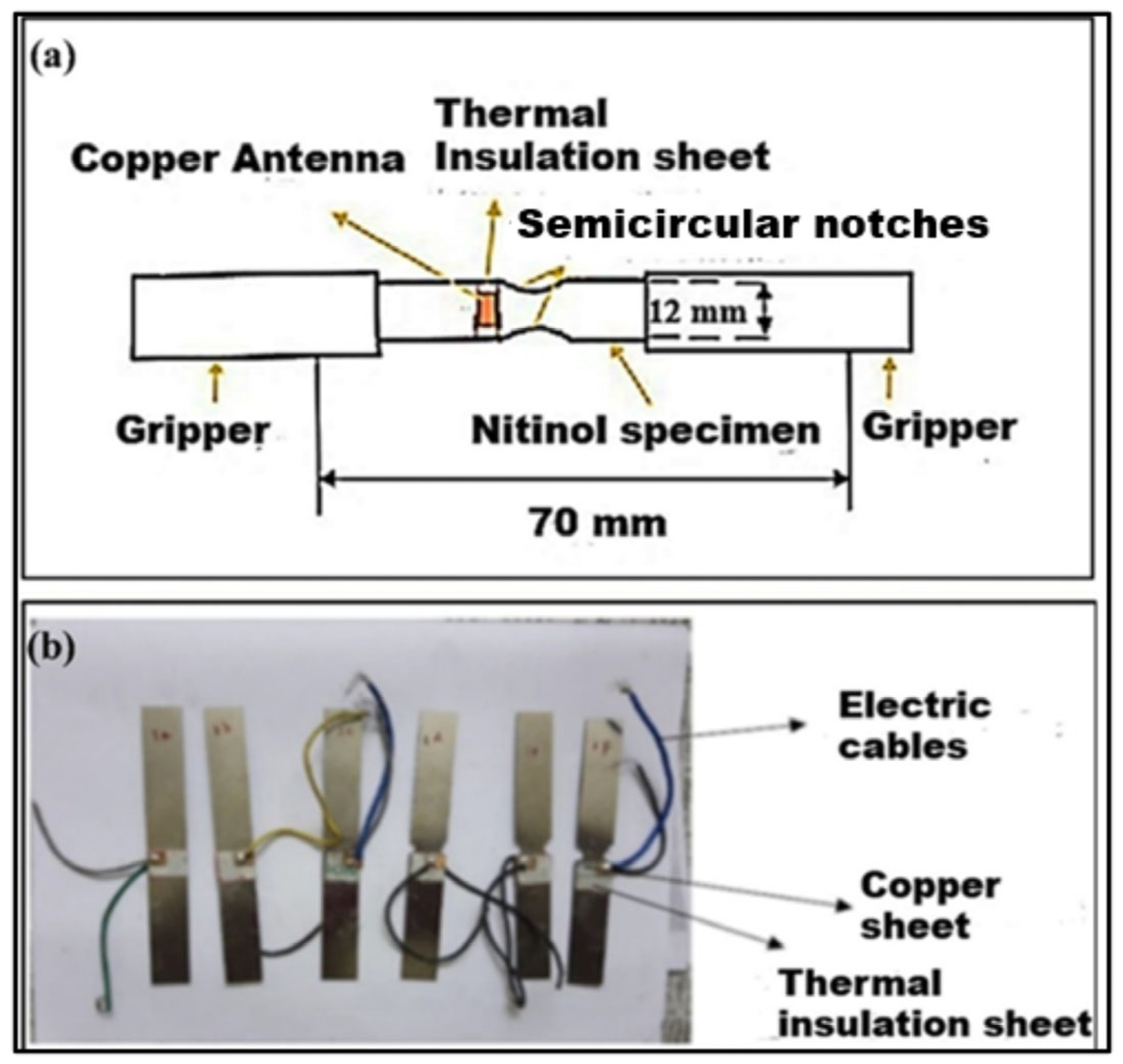
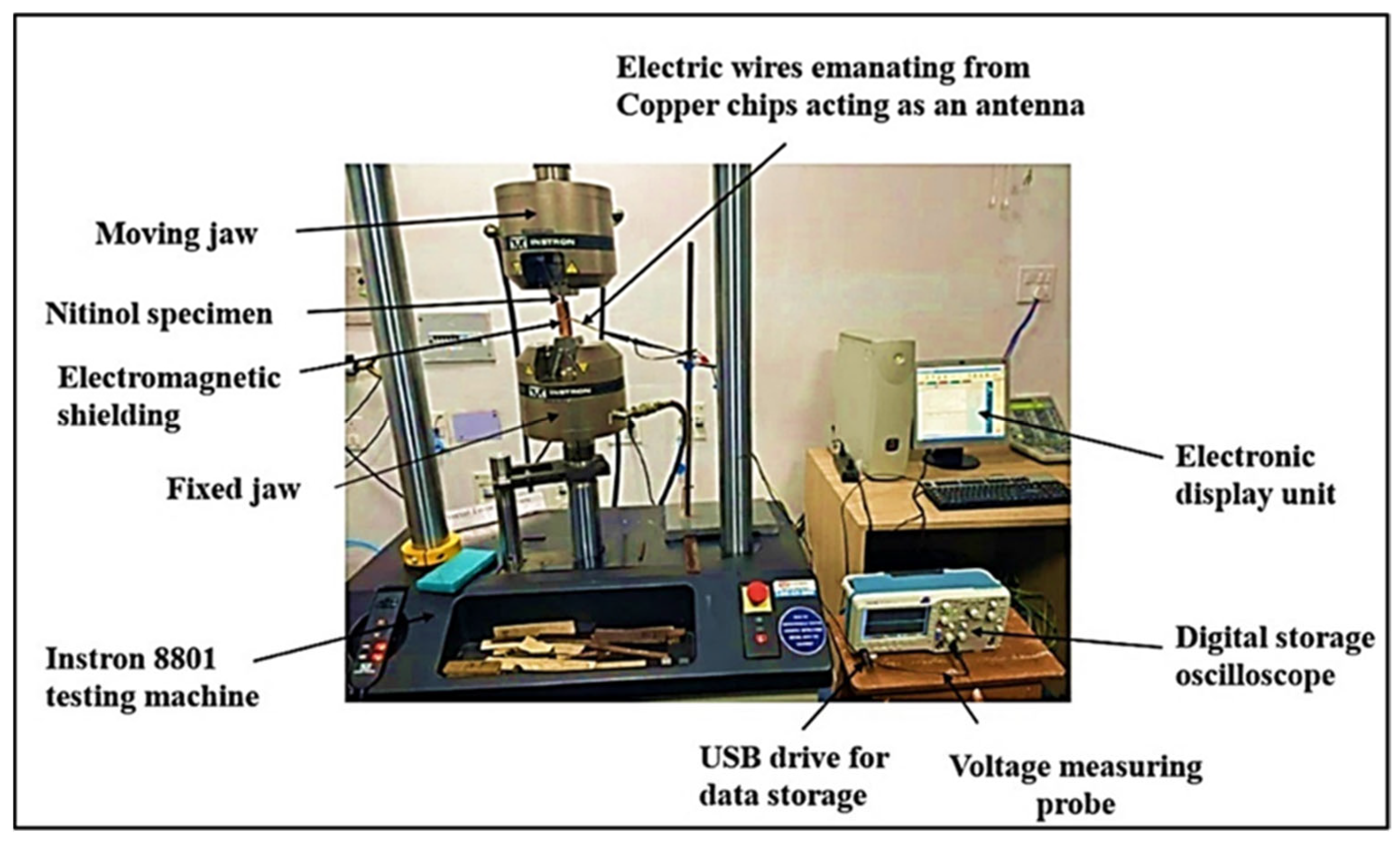
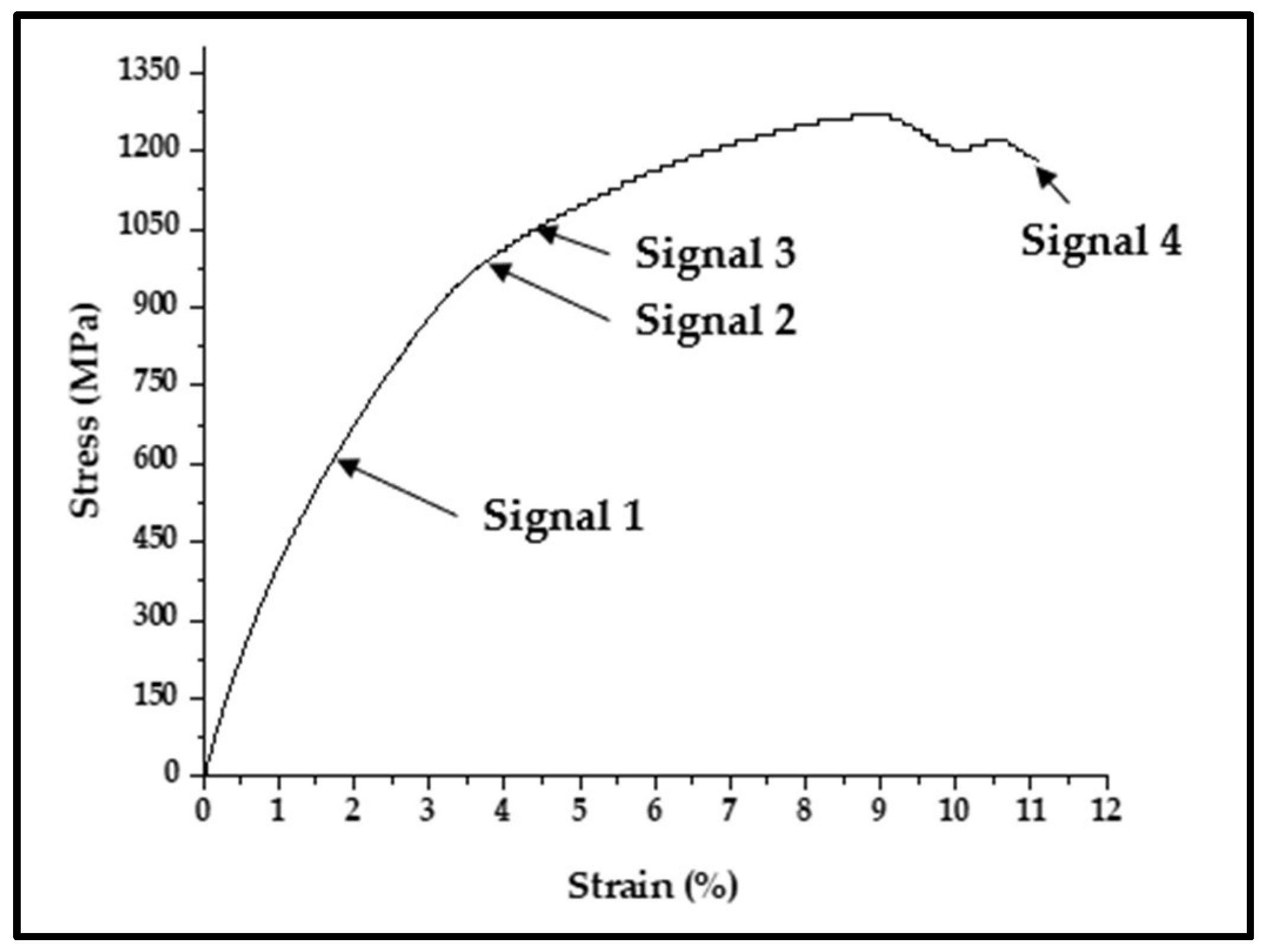
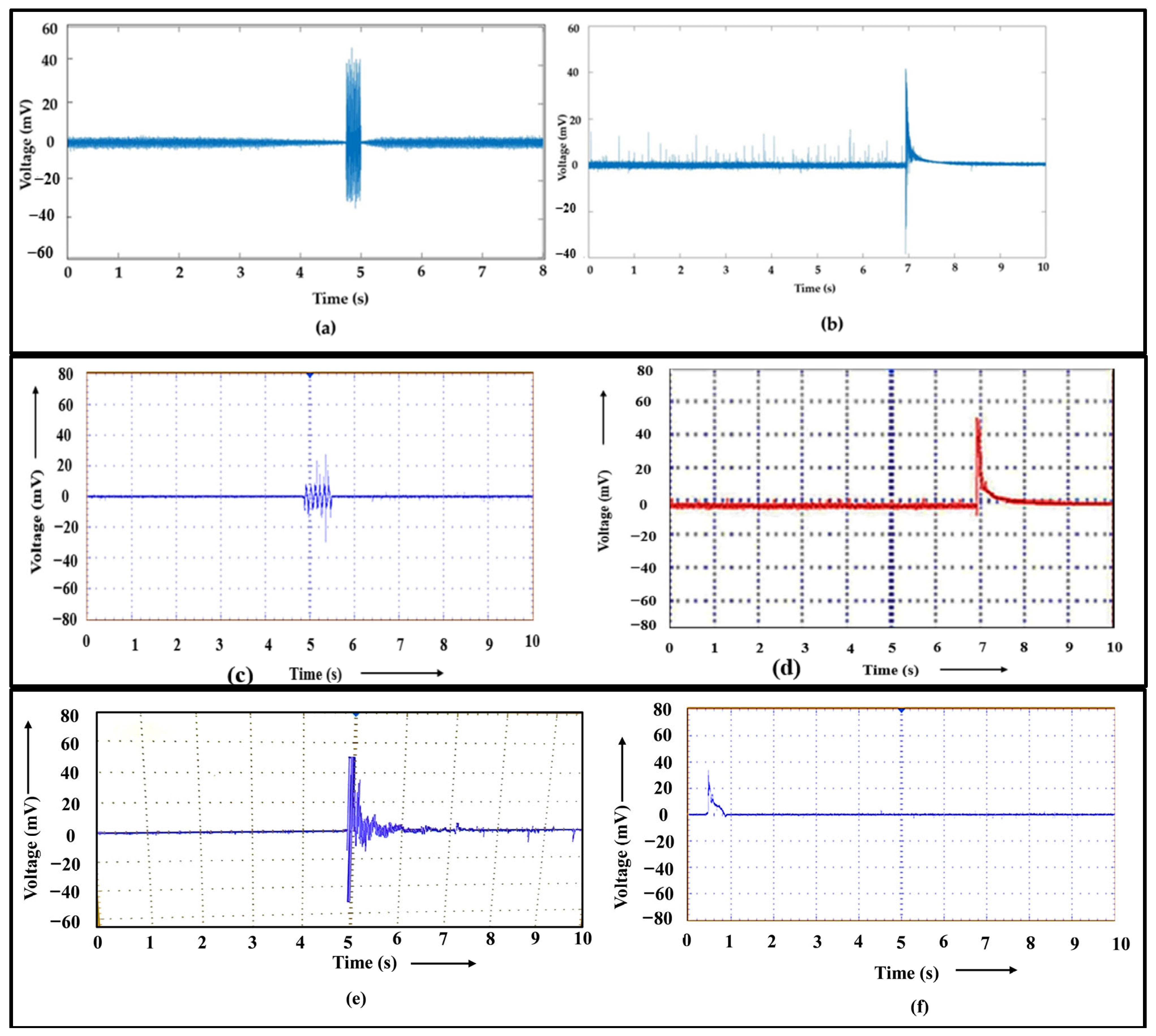

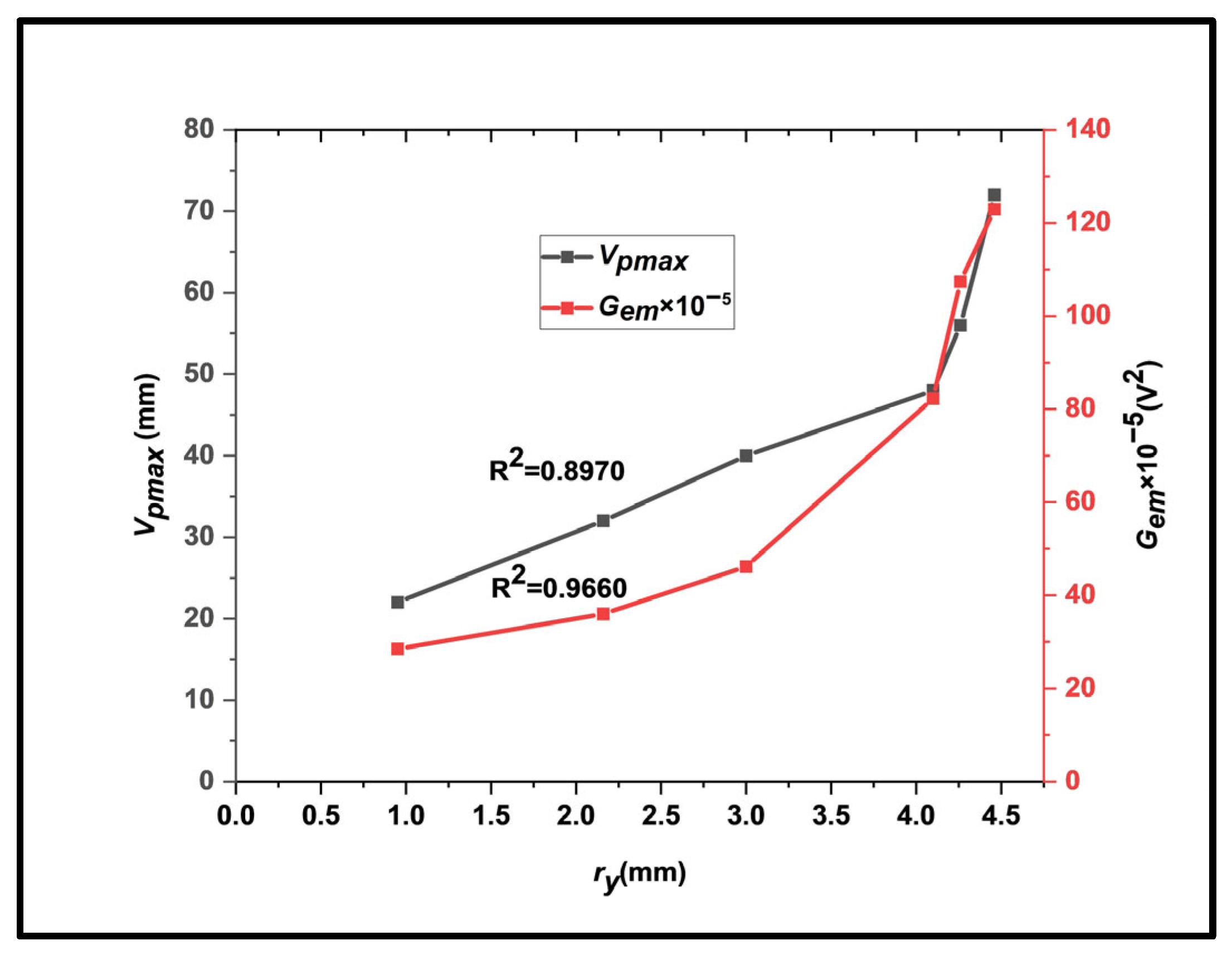

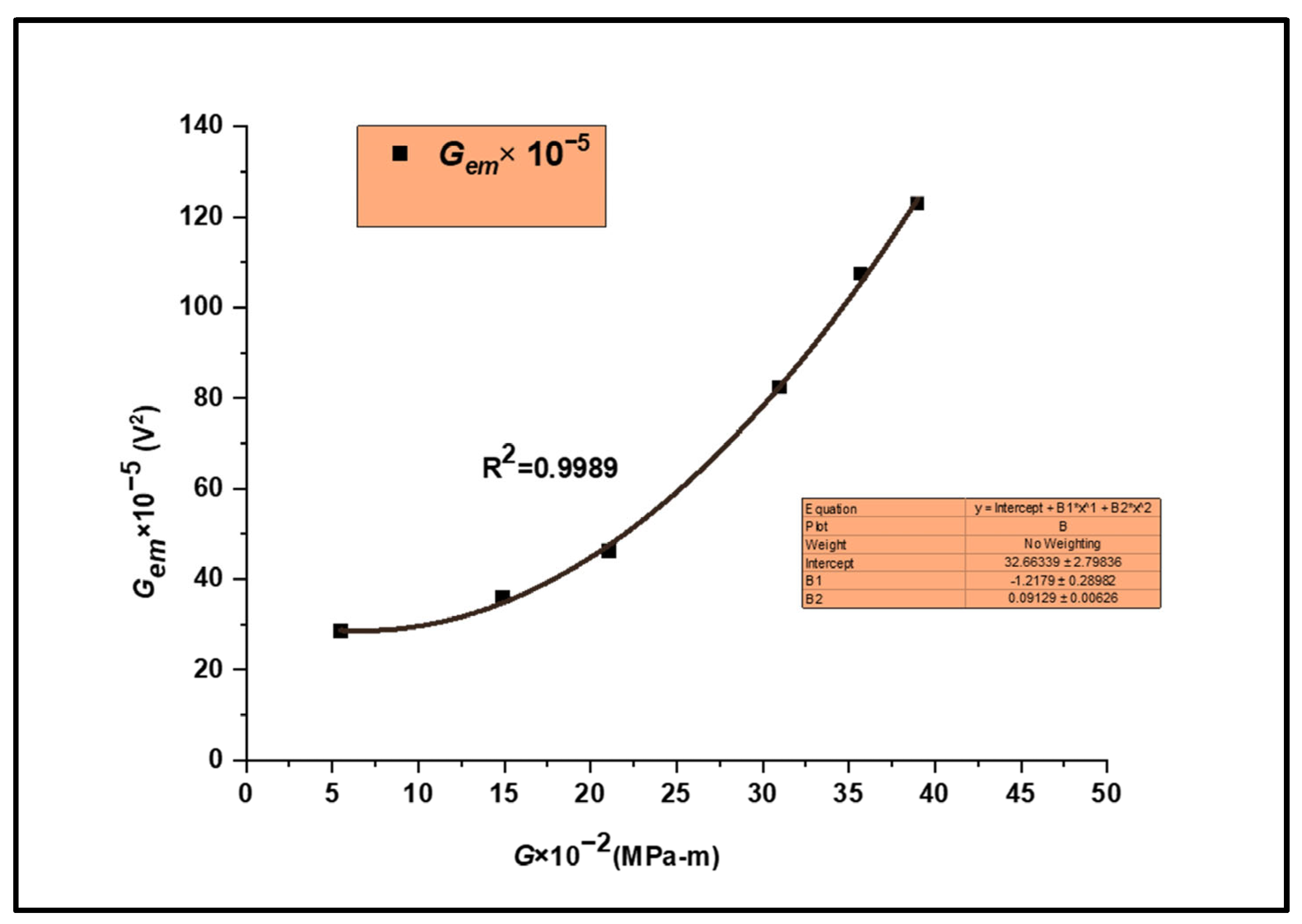

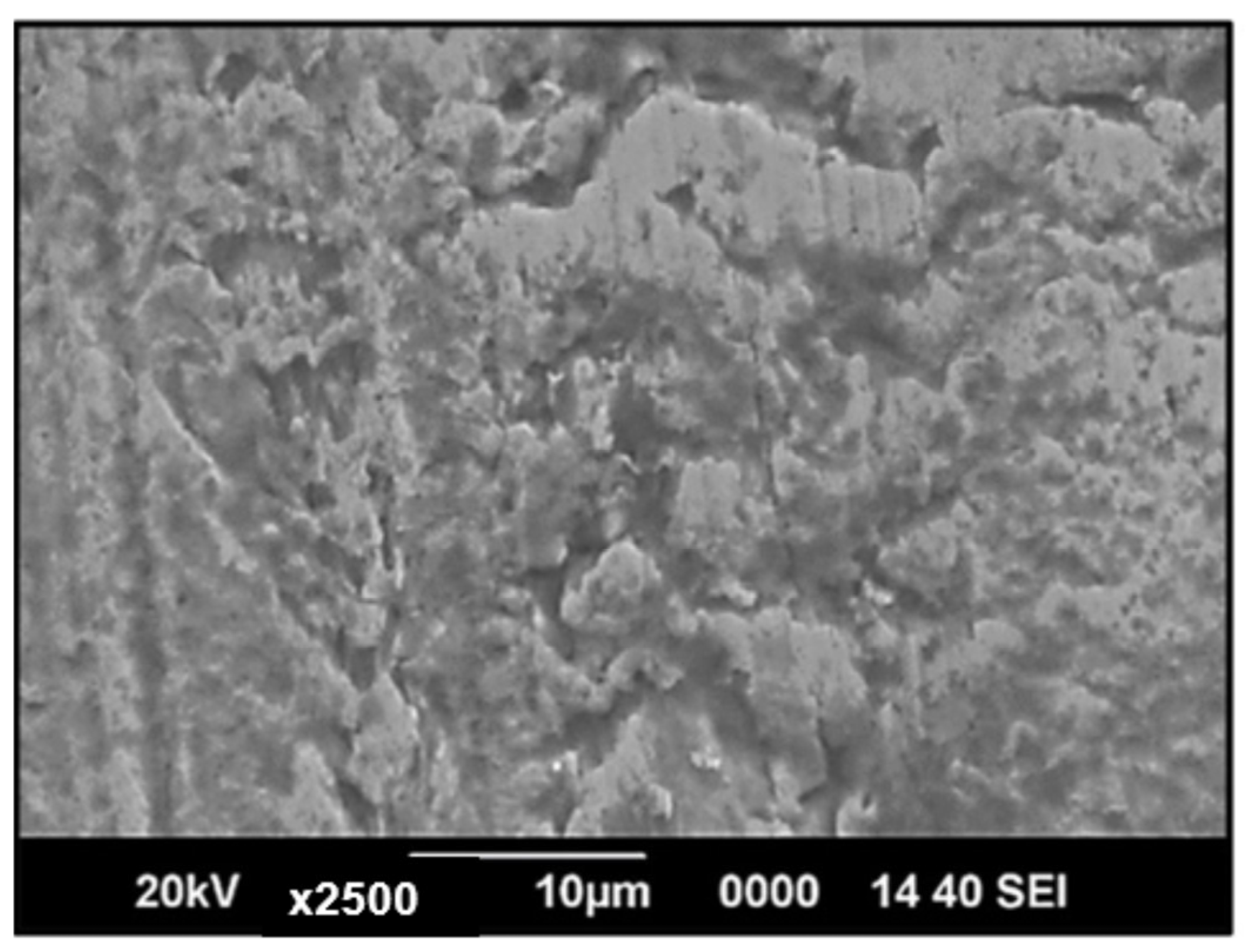
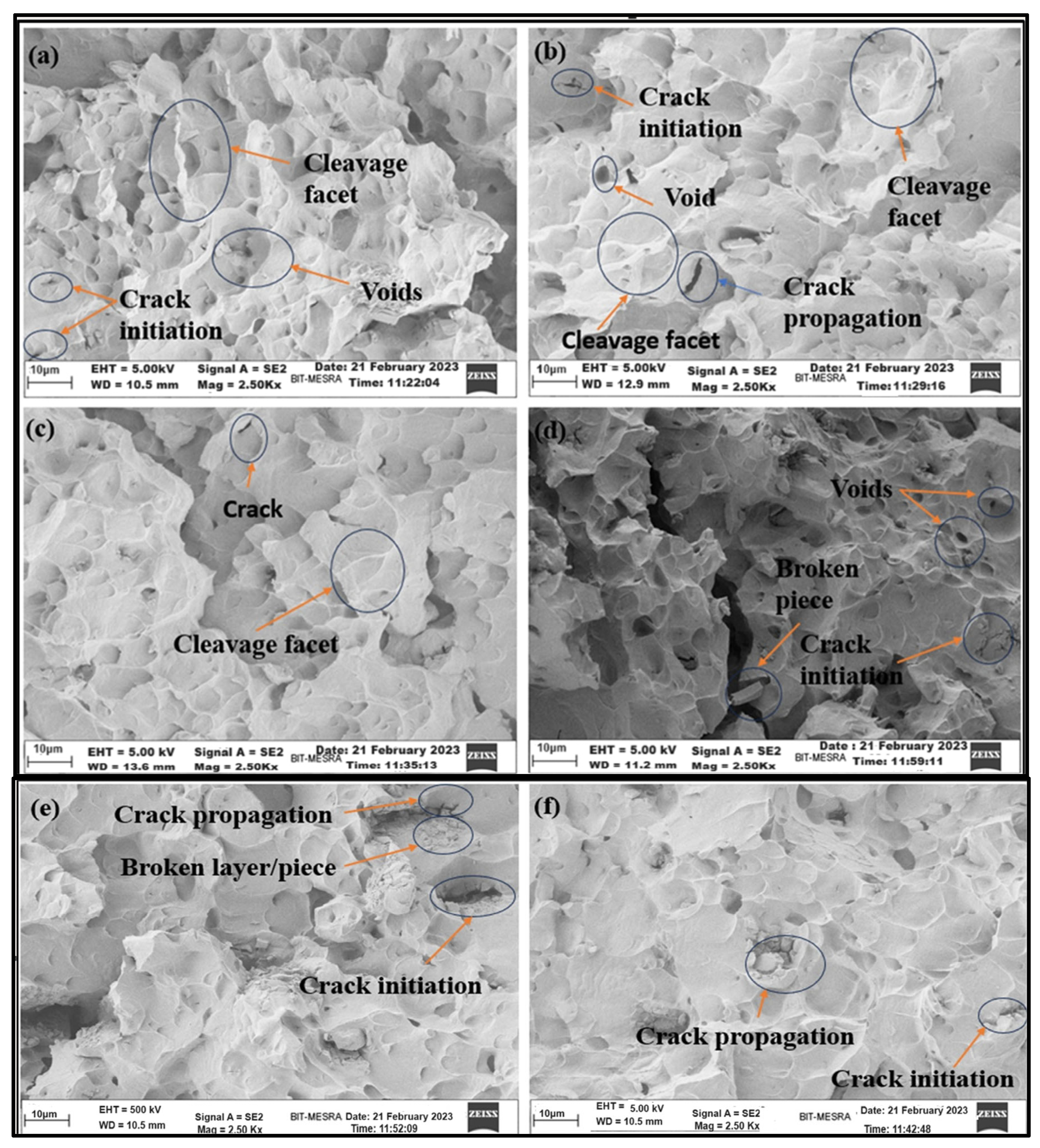
| Ni | Co | Cu | Cr | Fe | Nb | C | H | O | Ti |
|---|---|---|---|---|---|---|---|---|---|
| 55.7 | 0.05 | 0.01 | 0.01 | 0.05 | 0.025 | 0.036 | 0.001 | 0.02 | Balance |
| Notch Length (a) (mm) | Specimen Width (w) (mm) | Notch–Width Ratio (2a/w) | Specimen Thickness (mm) | Gauge Length (mm) | Loading Rate (mm/min) |
|---|---|---|---|---|---|
| 0.5 | 12 | 0.08 | 0.5 | 70 | 5 |
| 1 | 12 | 0.16 | 0.5 | 70 | 5 |
| 1.5 | 12 | 0.25 | 0.5 | 70 | 5 |
| 2 | 12 | 0.33 | 0.5 | 70 | 5 |
| 2.5 | 12 | 0.42 | 0.5 | 70 | 5 |
| 3 | 12 | 0.50 | 0.5 | 70 | 5 |
| Notch-Tip Radius (a) | Notch–Width Ratio (2a/w) | Fracture Load (N) | Tensile Stress Fracture Load (MPa) | Tensile Strain at Fracture Load | Critical Stress Intensity Factor (KC) (MPa−m1/2) | ry (mm) | G × 10−2 (MPa−m) | Vpmax (mV) | f (kHz) | Gem × 10−5 (V2) |
|---|---|---|---|---|---|---|---|---|---|---|
| 0.5 | 0.08 | 6558.95 | 1192.54 | 0.1540 | 38.69 | 0.95 | 5.50 | 22 | 1.20 | 28.5 |
| 1 | 0.16 | 5761.11 | 1152.23 | 0.0919 | 66.10 | 2.16 | 14.9 | 32 | 0.89 | 36 |
| 1.5 | 0.25 | 5651.26 | 1255.84 | 0.0903 | 82.56 | 3.00 | 21.1 | 40 | 0.75 | 46.2 |
| 2 | 0.33 | 5544.71 | 1386.18 | 0.0605 | 112.40 | 4.10 | 31.0 | 48 | 0.40 | 82.3 |
| 2.5 | 0.42 | 4529.56 | 1294.16 | 0.0534 | 120.10 | 4.26 | 35.7 | 56 | 0.25 | 107.4 |
| 3 | 0.50 | 4047.76 | 1349.25 | 0.0496 | 133.99 | 4.46 | 39.0 | 72 | 0.12 | 122.9 |
Disclaimer/Publisher’s Note: The statements, opinions and data contained in all publications are solely those of the individual author(s) and contributor(s) and not of MDPI and/or the editor(s). MDPI and/or the editor(s) disclaim responsibility for any injury to people or property resulting from any ideas, methods, instructions or products referred to in the content. |
© 2024 by the authors. Licensee MDPI, Basel, Switzerland. This article is an open access article distributed under the terms and conditions of the Creative Commons Attribution (CC BY) license (https://creativecommons.org/licenses/by/4.0/).
Share and Cite
Anand, A.; Kumar, R.; Pandey, S.; Hasnain, S.M.M.; Goel, S. Influence of an Engineered Notch on the Electromagnetic Radiation Performance of NiTi Shape Memory Alloy. Materials 2024, 17, 1708. https://doi.org/10.3390/ma17071708
Anand A, Kumar R, Pandey S, Hasnain SMM, Goel S. Influence of an Engineered Notch on the Electromagnetic Radiation Performance of NiTi Shape Memory Alloy. Materials. 2024; 17(7):1708. https://doi.org/10.3390/ma17071708
Chicago/Turabian StyleAnand, Anu, Rajeev Kumar, Shatrudhan Pandey, S. M. Mozammil Hasnain, and Saurav Goel. 2024. "Influence of an Engineered Notch on the Electromagnetic Radiation Performance of NiTi Shape Memory Alloy" Materials 17, no. 7: 1708. https://doi.org/10.3390/ma17071708








